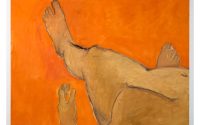Auctioneer Pierre Cornette de Saint-Cyr Dies at 84, Tracey Emin Plans Margate Community Center, and More: Morning Links for August 22, 2023
To receive Morning Links in your inbox every weekday, sign up for our Breakfast with ARTnews newsletter.
The Headlines
AUCTIONEER PIERRE CORNETTE DE SAINT CYR, whose namesake family auction house was acquired by Bonhams last year, died on Sunday in Saint-Tropez, France, Le Parisien reports. He was 84. Bonhams said in a statement that Cornette de Saint-Cyr “will forever be associated with introducing the first contemporary Chinese art, photography, and comic art sales in France.” He started Cornette de Saint Cyr in Paris in 1973, and two of his sons, Arnaud and Bertrand, eventually came aboard the firm, which grew to have 14 international salesrooms, AuctionLab reports. Cornette de Saint-Cyr was also a collector, focusing on drawings and photographs, and he chaired the Palais de Tokyo contemporary art center in Paris from 2003 to 2012.
LIVE-WORK SPACES. The Harlem home of writer Langston Hughes from 1947 until 1967, the year he died, is now a museum, the Art Newspaper reports. Located on East 127th Street, the residence is an Italianate-style building from 1869; Hughes worked on the top floor. Meanwhile, on the other side of the United States, a 5,300-square-foot building in the Venice section of Los Angeles that Godfredsen-Sigal Architects created for artist John Baldessari in 2009 is on the market for $6.7 million, Yo! Venice reports. Dubbed the “Baldessari Gallery/Museum,” the handsome modernist structure features an art studio, exhibition spaces, three baths, and more.
The Digest
Italy’s conservative government has been lobbying museums for shows on “cultural touchstones of the Italian right,” the Washington Post reports. Tomaso Montanari, an art historian on the steering committee of Florence’s Uffizi Gallery, said, “We are . . . smack dab in the middle of a neofascist revival.” [WaPo]
Dealer Marco Altavilla, who cofounded the influential T293 gallery in Naples, Italy, in 2002, with his partner Paola Guadagnino, died on Saturday after an illness. Now located in Rome, T293 has on its roster acclaimed figures like David Maljković, Simon Denny, and Tris Vonna-Michell. [Italy 24 Press News via Artforum]
Adobe Systems cofounder John Warnock, who was instrumental in developing the PDF, died on Saturday at the age of 82. With his wife, Marva Mullins, Warnock collected Native American art and rare books, which he shared online at rarebookroom.org. [The Associated Press]
Artist Tracey Emin has acquired a former bathing pavilion in Margate, England, and plans to turn it into a community center with a restaurant, gym, and more. Emin opened an art school in the seaside town earlier this year. [BBC News]
Bentonville, Arkansas, the land of Wal-Mart and the Crystal Bridges Museum of American Art, is “becoming a new capital of cool,” the Wall Street Journal argues in a guide to the city’s cultural and culinary offerings. [WSJ]
ARTISTS ON THE RECORD.Joana Vasconcelos, “artist, aristocrat, and karate fighter,” is in El País; Tuan Andrew Nguyen, now showing at the New Museum in New York, was on PBS NewsHour; and Park Mee-na, currently exhibiting at Atelier Hermès in Seoul, is in the Korea Times.
The Kicker
BURDEN OF DREAMS. This week’s New Yorker features a personal essay by the inimitable filmmaker (and former Whitney Biennial participant) Werner Herzog that is as rich and bizarre as one would hope. It touches on some of his exploits in his early years, like running stereos into Mexico for “well-off rancheros,” breaking his ankle jumping out of a window to spray children (housemates) with shaving cream in Pittsburgh, and . . . let’s not spoil it all here. Herzog also discusses his methods, and turns philosophical at some points. “Truth, like history and memory, is not a fixed star but a search, an approximation,” he writes. [The New Yorker]



